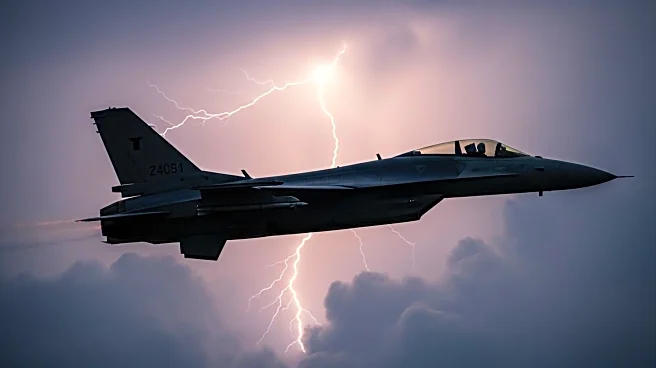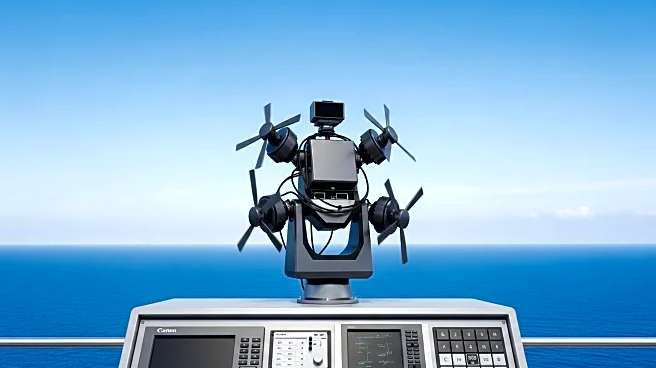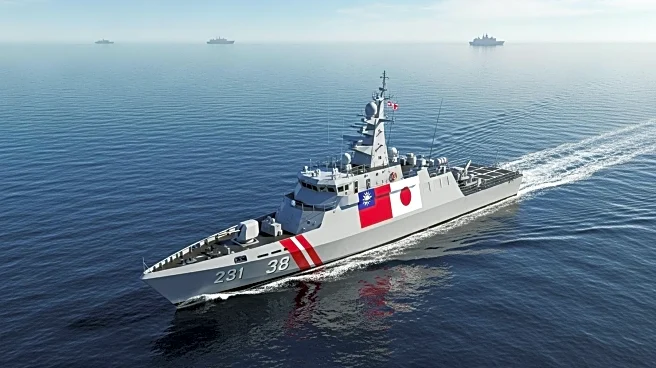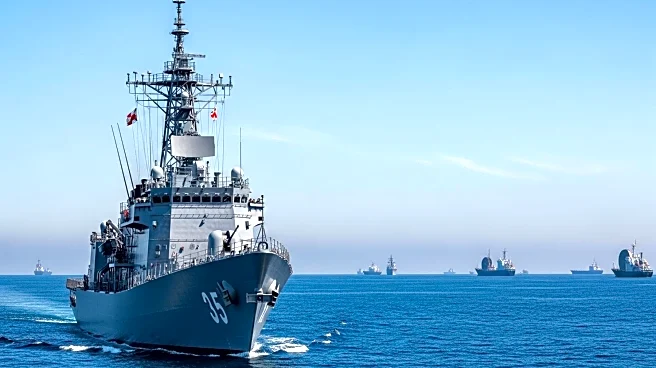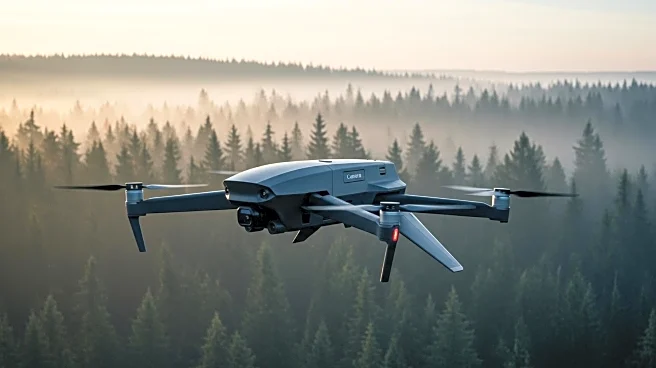What's Happening?
Japan's Defense Ministry reported that a Chinese intelligence collection ship, CNS Kaiyangxing, transited the Tsugaru Strait between Japan's main islands of Honshu and Hokkaido. This movement marks the ship's transition from the Sea of Japan to the North Pacific. The vessel was previously tracked sailing through the Tsushima Strait between Japan and South Korea, having arrived in the Sea of Japan from the East China Sea in late September. This activity is part of China's intensified maritime presence around Japan, as noted in Japan's defense white paper 2025. The document highlights China's increased activities in the East China Sea, particularly around the Senkaku Islands, the Sea of Japan, and the western Pacific Ocean.
Why It's Important?
China's naval expansion poses strategic challenges to U.S.-led alliances in the Pacific, with Japan playing a crucial role in projecting military power to deter Chinese aggression. The presence of Chinese warships near Japan underscores the geopolitical tensions in the region, as Japan is a key ally of the United States. The movement of Chinese vessels through international waterways near Japan prompts the country to deploy aircraft and ships for surveillance, reflecting the ongoing military vigilance required to maintain regional stability. This development could influence defense policies and military strategies among Pacific nations, particularly those aligned with U.S. interests.
What's Next?
China is expected to continue its naval activities around Japan, potentially leading to increased military readiness and strategic adjustments by Japan to safeguard its territorial waters. The ongoing surveillance and tracking of Chinese vessels by Japan may result in heightened diplomatic exchanges or military posturing. The situation could also prompt discussions among U.S. allies in the region regarding collective security measures and defense cooperation to address the growing Chinese maritime presence.
Beyond the Headlines
The intensification of Chinese naval activities around Japan raises concerns about potential incidents at sea or in the air, as noted by China's Defense Ministry. The strategic importance of the region, coupled with the presence of nuclear-capable submarines and advanced warships, highlights the delicate balance of power and the need for careful diplomatic and military engagement to prevent escalation.

